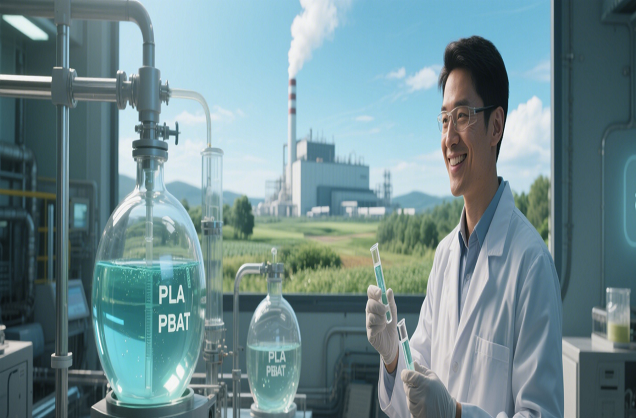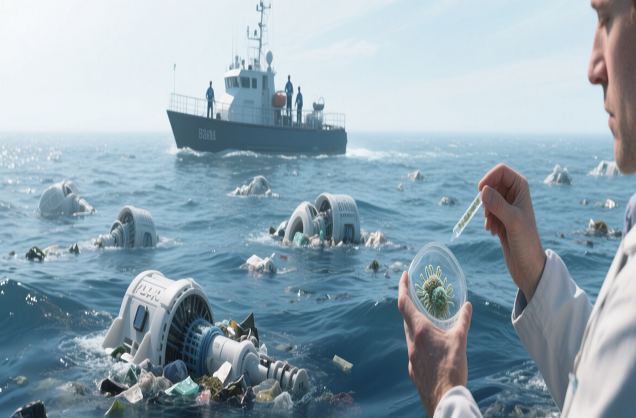PLA vs PBAT vs Corn Starch: A Complete Analysis of Degradation Conditions for Biodegradable Materials | 2024 Environmental Guidelines
PLA (polylactic acid), PBAT (polybutylene adipate/terephthalate) and corn starch, as the three major mainstream degradable materials, each have unique degradation characteristics and environmental requirements.

I.PLA degradation conditions and mechanisms
Industrial composting environment (optimal conditions)
PLA performs best in an ideal industrial composting facility, which needs to meet the following stringent conditions:
- Temperature range: 58-70°C (60°C optimal)
- Relative humidity: 60% or more
- pH: 6.0-8.5 (neutral to weakly alkaline)
- Microbial populations: Specific thermophilic bacteria and fungi.
- Typical degradation time: 6-12 months (to achieve over 90% degradation rate)
Home Composting Environment
The degradation of PLA slows down significantly under normal home composting conditions:
- Temperature range: 20-40°C
- Degradation time: 24-36 months
- Note: At low temperatures, PLA may physically fragment rather than biodegrade.
Performance in the natural environment
- In soil: 2-5 years (dependent on local climate and microbial activity)
- Freshwater: very slow degradation, may last for decades
- Freshwater: very slow degradation, may last for decades Seawater: almost no degradation, similar to common plastics
Key degradation mechanisms
PLA starts the degradation process mainly through hydrolysis reactions:
1. penetration of water leading to breakage of the ester bond (hydrolysis)
2. molecular weight decreases to below 10,000
3. Microorganisms begin to metabolize the oligomers and lactic acid monomers.
4. end products are CO₂, water and biomass

II. Degradation Characterization of PBAT
Optimal degradation environment
PBAT can be degraded under milder conditions than PLA:
- Temperature: 30-50°C (no need for high temperature)
- Humidity: above 50%
- pH range: 5.5-9.0
- Typical degradation time: 3-9 months (industrial composting)
Comparison of different environments
- Industrial composting: 3-6 months (90% degradation)
- Home composting: 9-18 months
- Active soil: 12-24 months
- Seawater environment: 24-36 months (advantage over PLA)
Characteristics of degradation process
PBAT has a unique two-stage degradation:
1. the aliphatic chain segment is first attacked by microorganisms
2. the aromatic portion is subsequently degraded
3. Intermediates promote the degradation of other materials (e.g. PLA)
4. final complete mineralization to CO₂, water and biomass
Temperature sensitivity
- Degradation 5-8 times faster at 50°C than at 25°C
- Below 10°C biodegradation almost stops
III. Degradation Characteristics of Corn Starch
Conditions of easiest degradation
Corn starch is the easiest to degrade among the three materials:
- Temperature: starts above 15°C
- Humidity: only 30% moisture content required
- No specific pH required
- Degradation time: 1-6 months (complete degradation)
Environmental Adaptation
- In soil: 1-3 months
- In compost: 2-4 weeks
- In water: 1-2 months (fresh water)
- Special advantage: almost all environmental microorganisms can decompose starch
Explanation of the degradation process
Starch degradation is the result of multiple factors:
1. swelling by water absorption (physical change)
2. enzymatic degradation (α-amylase and glucoamylase)
3. microbial consumption (bacteria, fungi, etc.)
4. final conversion to CO₂, water and energy
Temperature effect pattern
- Degradation rate increases by 2-3 times for every 10°C increase.
- Degradation almost stops below 0°C

IV. Synergistic degradation effect of composite materials
Typical ratio of PLA/PBAT/starch
Degradation characteristics of common ground film formulations (45% PLA/30% PBAT/25% starch):
1. Initial stage (1-2 months): rapid consumption of starch, formation of microporous structure
2. Middle stage (2-6 months): PBAT begins to degrade, accelerating the hydrolysis of PLA.
3. Late stage (6-12 months): complete decomposition of PLA.
Optimization of environmental conditions
Ideal degradation conditions for composites:
- Temperature: 45-60°C
- Humidity: 50-70%.
- Microbial diversity: need to include amylolytic and polyesterolytic bacteria.
Degradation time comparison table
Time to complete degradation of composites in different environments:
- Industrial composting: 4-8 months
- Home composting: 12-24 months
- Agricultural soil: 18-36 months
- Landfill: very slow degradation (not recommended)
 Significant progress in PBAT/s
Significant progress in PBAT/s
 PLA/PBAT composite film degrad
PLA/PBAT composite film degrad
 A New Choice for Takeaway Pack
A New Choice for Takeaway Pack
 Significant progress in PBAT+s
Significant progress in PBAT+s
CONTACT
Add: Room 4006, No.1 Helong Yiheng Road, Baiyun District, Guangzhou City
Tel: +8613450255948
Wechat : +86-13450255948
Fax: +86-13450255948
E-mail: 13450255948@163.com








